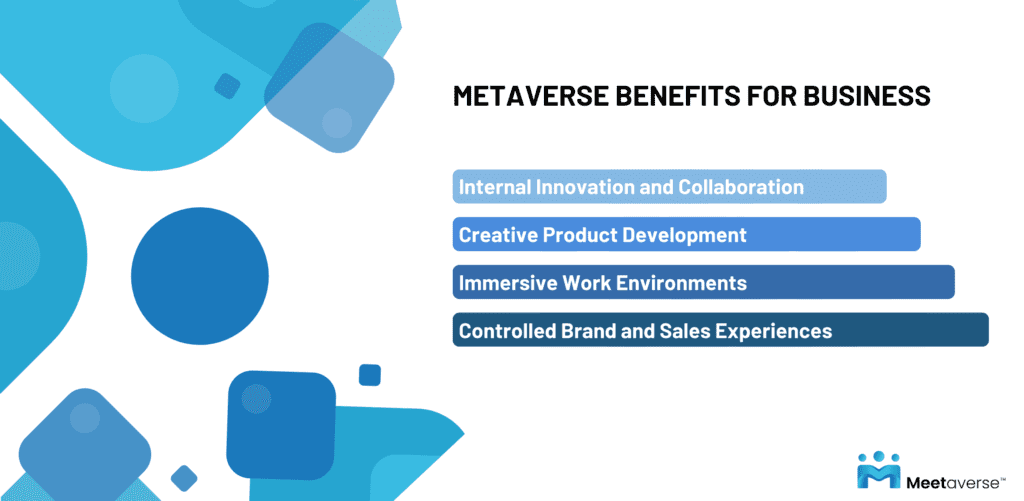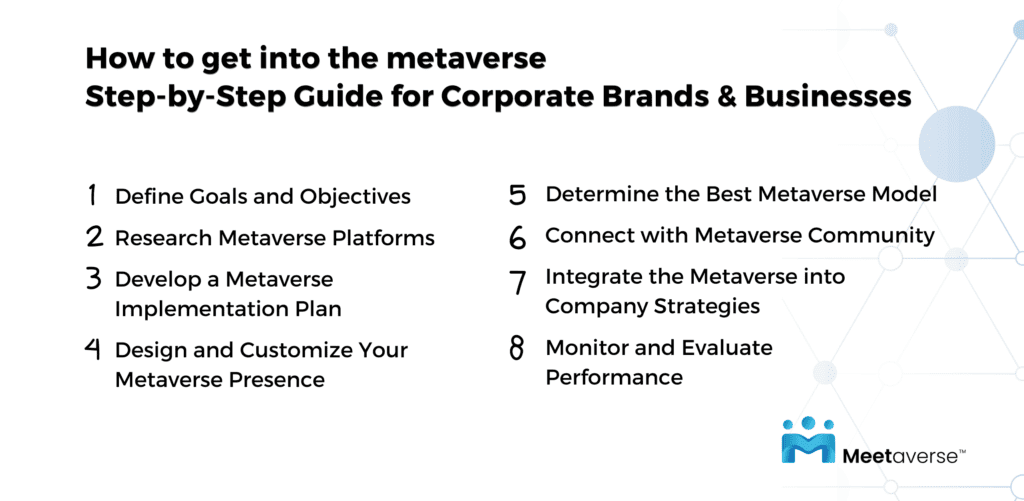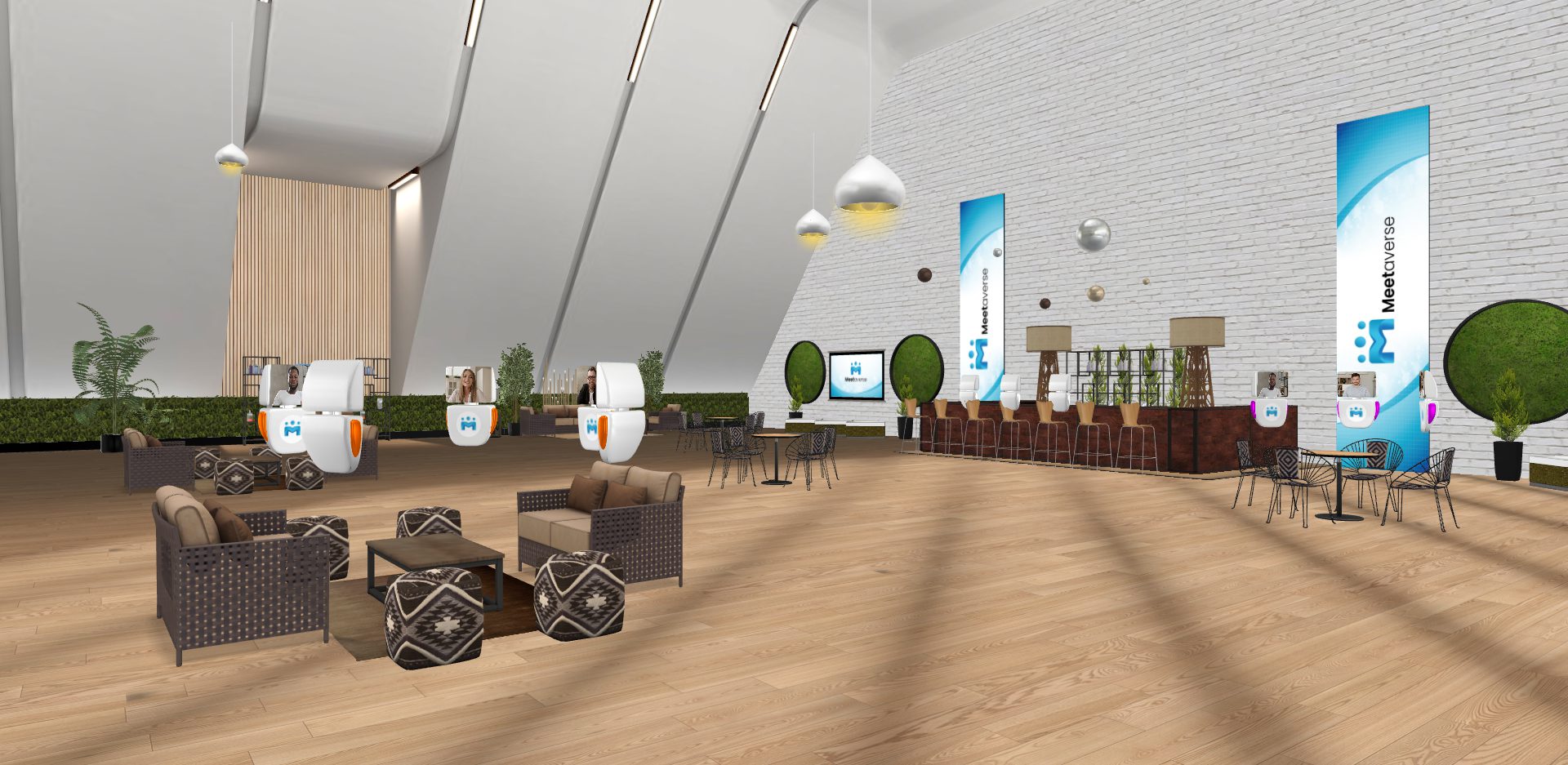Unlock the metaverse’s potential for business brands with our detailed guide on how to get into the metaverse in 2024. As technology transforms communication and business, the metaverse emerges as a revolutionary platform. Thought leaders and early adopters are already exploring its vast opportunities, but how can brands effectively navigate this virtual realm?
Our comprehensive guide provides strategic insights on how to enter metaverse and leverage its potential for your business, making a meaningful impact.
Discover how to become an innovator, seize the boundless opportunities, and embrace the future of the metaverse for your brand. With the right approach and understanding, businesses can thrive in this transformative digital landscape and create immersive experiences that resonate with their audience.
The metaverse is not merely a technological shift; it’s a paradigm that redefines how businesses operate, innovate, and connect with customers.
Embracing intentional experience design and 3D environments unlocks boundless potential for brands to create immersive and engaging experiences in the metaverse.
How to join metaverse early is a question that businesses must address to gain a competitive edge, establish market leadership, and future-proof their brand in this transformative digital landscape.
It’s an exciting frontier where innovation and creativity converge, empowering businesses to meet the evolving needs and expectations of the digital-savvy generations.

Entering the metaverse early offers numerous advantages and opportunities, positioning businesses at the forefront of innovation, market leadership, and future-proofing their brand.
1.Internal Innovation and Collaboration:
2. Creative Product Development:
3. Immersive Work Environments:
4. Controlled Brand and Sales Experiences:
By entering the metaverse early, businesses can capitalize on these advantages to drive innovation, establish market leadership, and safeguard their brand’s relevance in an ever-evolving digital landscape.
Unlock the business opportunities in the metaverse, as it goes beyond individual departments, revolutionizing the entire organization. Understanding the diverse needs and current technological limitations of your company is crucial for crafting the best metaverse experience.
Internally, your teams will benefit from improved collaboration and content hosting, while externally, being an early adopter presents an opportunity to establish market leadership. Embracing innovation may be challenging, but it showcases a future-focused vision and excitement within the brand.
The metaverse’s transformative potential empowers businesses to seize the multitude of business opportunities it offers.
Learn from past technological advancements to develop a well-thought-out strategy for entering the metaverse. Just as organizations faced challenges when adopting the Internet, social media, and mobile compliance, a clear plan is crucial for leveraging the metaverse effectively.
By identifying goals, target audiences, and how to utilize metaverse technology to support objectives, businesses can avoid costly mistakes and position themselves for success in this transformative digital frontier.
Several brands and companies have successfully entered the metaverse, exploring the potential of this virtual reality frontier.
Gartner predicts that by 2026, 25% of the population will spend an hour daily in the metaverse for tasks such as work, shopping, education, and entertainment.
This shift is due to vendors creating ways to digitally replicate real-life experiences. Marty Resnick, Gartner’s VP of Research, sees these activities converging into a single metaverse with diverse technologies and experiences.
Brands are already preparing for this “high season”. Some prominent examples include:
Brands using the metaverse showcase virtual products, host virtual events and immersive experiences, and engage with users in innovative ways. These examples demonstrate how diverse industries embrace the metaverse, transforming the way they interact with their audience.
Wondering how to get into metaverse? As the metaverse continues to evolve, more brands are likely to explore its potential for enhancing their presence and engaging with their audiences in exciting new ways.

To become “metaverse ready,” adopt the mindset that users will want to actively participate in creating content and interacting with the virtual space.
Consider how generations like Gen Z, Gen Y, and Gen Alpha are accustomed to participating in content generation online. They seek customizable and personalized experiences, where they can create content, personalize interactions, and explore dynamic virtual worlds.
Conduct thorough research to identify suitable metaverse platforms and providers that align with your brand’s objectives and target audience. Consider factors such as platform features, user base, and integration capabilities.
Create a comprehensive metaverse implementation plan that outlines your brand’s strategy for leveraging the virtual space. Identify concrete objectives based on your goals and determine the means to achieve them through your strategy.
Decide whether to use the metaverse as an activation or destination model, based on your lead generation, branding, and innovation goals.
Design and customize your virtual space in the metaverse to reflect your brand identity and deliver an immersive experience. Allow users to create content, personalize their interactions, and explore a dynamic environment that aligns with their preferences.
Understand the differentiation between activation and destination models in the metaverse and weigh the pros and cons of each. Identify which model suits your brand’s needs best.
To use metaverse effectively for your organization, determine what’s most important to you:
If lead generation and brand awareness are your primary objectives, using the metaverse as an activation can be advantageous.
Actively engage with the metaverse community to build meaningful connections and foster brand loyalty. Participate in virtual events, collaborations, and discussions to establish a strong presence in the virtual world.
Integrate the metaverse into your marketing and sales strategies to reach your target audience effectively. Utilize virtual sales solutions and virtual spaces to showcase your products, offer exclusive experiences, and engage potential customers.
Continuously monitor and evaluate the performance of your metaverse presence. Measure key performance indicators (KPIs) such as user engagement, lead generation, and conversion rates. Use the data to make informed adjustments and optimize your metaverse strategy for maximum impact.
Whether you seek lead generation or a comprehensive solution supporting the entire customer journey and empowering internal teams, Meetaverse is your gateway to establishing a corporate metaverse.
With Meetaverse, empower your organization with virtual workplace solutions to accelerate sales, deliver immersive brand experiences, and facilitate remote work environments. Imagine various teams engaged in separate activities within the same virtual space – the sales team closing deals, marketing hosting product launches, and HR conducting online corporate training sessions.

Customize your corporate metaverse with Meetaverse, offering everything from simple meeting spaces to comprehensive digital office environments.
Meetaverse offers a comprehensive solution for corporations to seamlessly enter the metaverse, driving engagement, collaboration, and customer experiences. Enhance your corporate presence with Meetaverse and unlock the full potential of the metaverse for your organization.
Ready to experience the power of Meetaverse and transform your corporate presence in the metaverse? Book a demo now to see firsthand how Meetaverse can accelerate your sales, deliver immersive brand experiences, and support your remote work environment.
Metaverse platforms are taking immersive branding strategies to the next level...
read moreAs organizations move from physical offices to hybrid and digital-first environm...
read moreRemember the last team meeting? Staring at pixelated faces on a screen, the endl...
read more